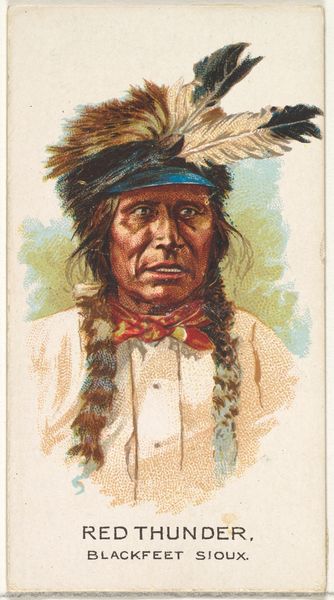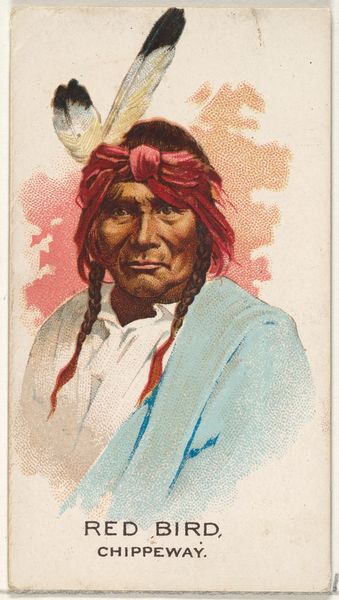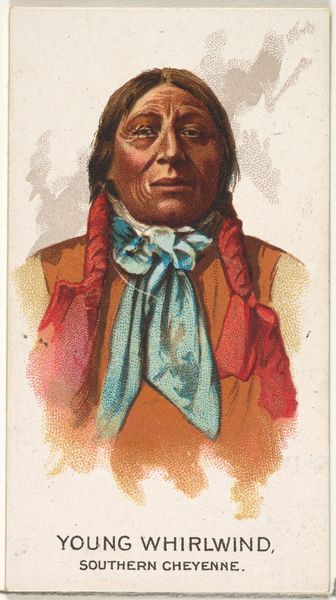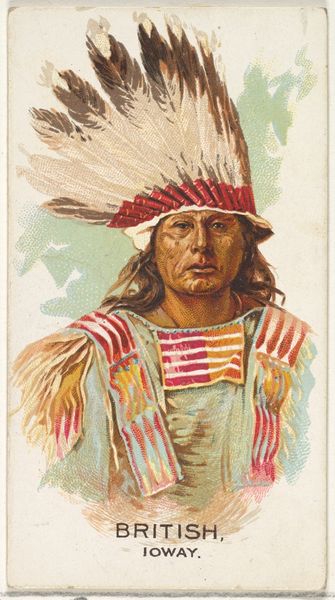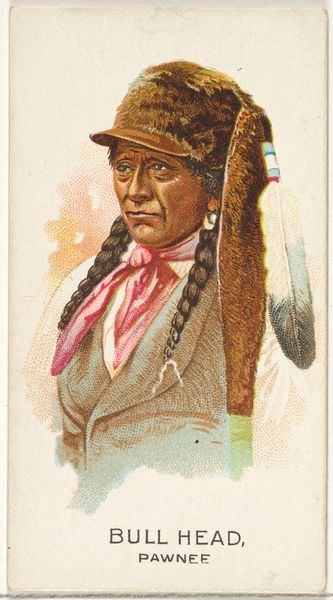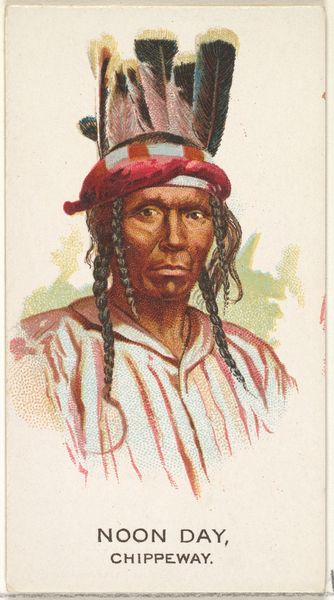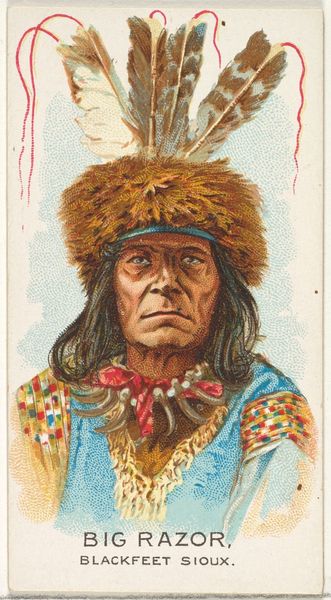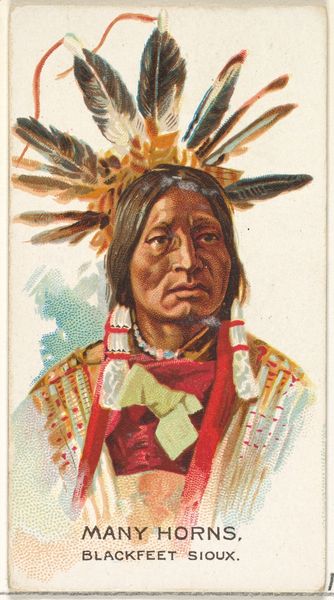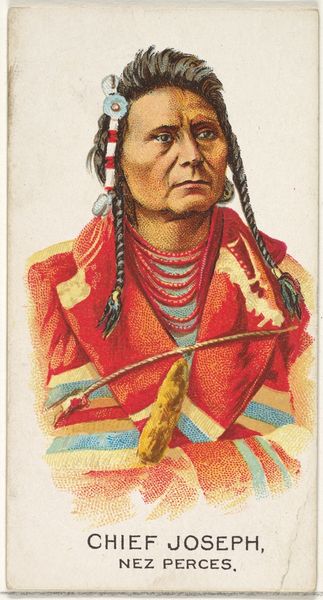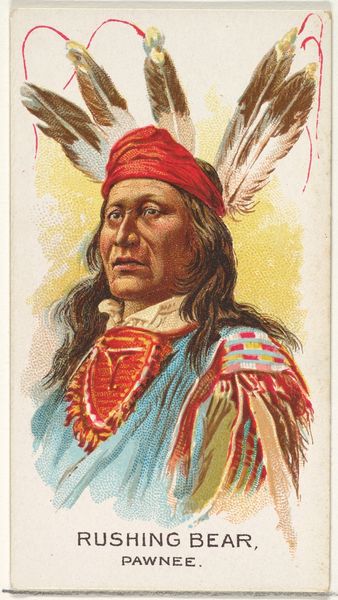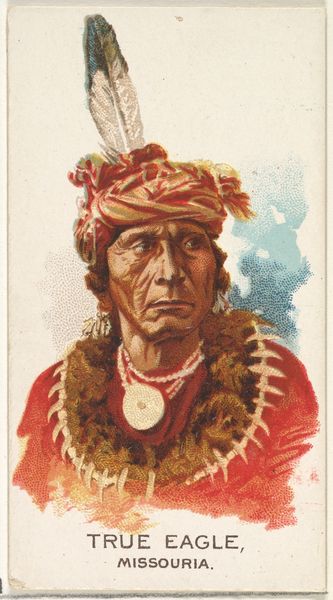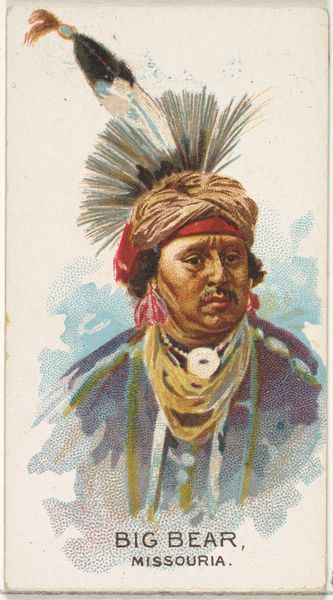
Geronimo, Apache, from the American Indian Chiefs series (N2) for Allen & Ginter Cigarettes Brands 1888
0:00
0:00
drawing, lithograph, print
#
portrait
#
drawing
#
lithograph
# print
#
caricature
#
academic-art
#
realism
Dimensions: Sheet: 2 3/4 x 1 1/2 in. (7 x 3.8 cm)
Copyright: Public Domain
Curator: What a striking image. This is a lithograph entitled "Geronimo, Apache, from the American Indian Chiefs series (N2) for Allen & Ginter Cigarettes Brands," created in 1888. It’s part of the collection at the Metropolitan Museum of Art. Editor: My first impression is one of surprising contrast. The details are realistically rendered, yet the coloring and patterned clothing give it a somewhat theatrical, almost cartoonish, feel. Curator: Exactly. It’s a fascinating object of material culture. Allen & Ginter, a prominent cigarette manufacturer, included these cards in their packs. The "American Indian Chiefs" series served to popularize and perhaps exoticize indigenous figures for a largely white consumer base. Editor: The scarf and head wrap, in particular, jump out. Those geometric shapes and colors seem deliberately chosen. Was there an effort to accurately represent Apache symbolism, or were these simply visual tropes used to convey a generic sense of “Indianness?" Curator: That’s a key question. The depiction is complex. Geronimo himself had a fascinating and fraught relationship with image-making; he understood its power. While it's true that such commercial images often perpetuate stereotypes, they also, inadvertently perhaps, contribute to a broader, though not always accurate, historical record. Editor: The tight, formal pose contrasts with what I know about Geronimo's life—his fierce resistance and fight for survival. Yet his stern facial expression and deep-set eyes reflect a quiet determination. The artist captured something compelling there, even if it's filtered through a lens of 19th-century societal biases. Curator: And there is something unsettling in how this image, intended as a collectible within a consumer product, circulates Geronimo's image. The institutional framing of figures like Geronimo remains pertinent when we look at who controls historical narratives. Editor: Thinking about the context, it shifts my perspective entirely. Beyond the image, it’s a reminder of the power of appropriation and the weight that symbols can carry when they are embedded in historical currents. Curator: Indeed, seeing the ways images were created and circulated opens conversations about power dynamics which is one important way these artworks speak to the contemporary world.
Comments
No comments
Be the first to comment and join the conversation on the ultimate creative platform.
